STS-115
NASA managers decided to move the STS-115 launch date forward to August 27 to obtain better lighting conditions to photograph the external tank.The rollout was scheduled for July 31, but a storm in the vicinity of the Kennedy Space Center resulted in a delay of two days from fears of the orbiter being hit by lightning, which could cause immeasurable damage.[11] Columbia's demise was due to a piece of foam, shed from its external tank, striking the shuttle's left wing during launch and causing a hole that was breached during re-entry.On August 28, 2006, it was decided to postpone the launch and rollback Atlantis to the VAB after updated forecasts projected Hurricane Ernesto would regain its strength and pass closer to Kennedy Space Center than previously anticipated.In the early morning of September 6, 2006, engineers observed an apparent internal short when one of the three electricity producing fuel cells was powered up.[26] On September 9, 2006, all the engine cut-off sensors were working properly, and following a flawless countdown, at 15:15 UTC (11:15 EDT), Atlantis lifted off the launch pad to the International Space Station.[27][28] As Atlantis launched, the International Space Station was 350 kilometres (220 mi; 190 nmi) above the northern Atlantic Ocean, between Greenland and Iceland.[28] Moments after main engine cutoff, 8.5 minutes after liftoff, Tanner and MacLean used hand-held video and digital still cameras to document the external tank after it separated from the shuttle.[28] During their first full day in space, the crew thoroughly examined Atlantis with the Orbiter Boom Sensor System, the 15 meter (50-foot) long extension for the shuttle's robotic arm.Pilot Chris Ferguson and mission specialists Dan Burbank and Steve MacLean performed a slow, steady inspection of the reinforced carbon-carbon panels along the leading edge of Atlantis' starboard and port wings and the nose cap.[29] The crew worked ahead of schedule for most of the day readying the ship for docking and preparing for the mission's three planned extra-vehicular activities (EVA).Mission specialists Joe Tanner and Heide Stefanyshyn-Piper checked out the spacesuits and tools that they, Burbank and MacLean used during spacewalks set for Days 4, 5, and 7.[29] On the space station, Expedition 13 Flight Engineer Jeffrey Williams prepared the orbiting laboratory for Atlantis' arrival on Day 3.[30] Following docking, Ferguson and Burbank attached the shuttle's robotic Canadarm to the 17.5-ton P3/P4 truss, lifted it from its berth in the payload bay, and maneuvered it for handover to the station's Canadarm2.[37] Other activities of Day 6 included a "double walk off" of the station's Canadarm2 from its current location at the Mobile Base System to the Destiny Laboratory Module[36] and the preparation for the mission's third spacewalk.Near the end of the spacewalk, the astronauts carried out a test to evaluate using infrared video of the leading edge of Atlantis' wing to detect debris damage.During the morning of day 11, astronauts Jett and Ferguson tested Atlantis' reaction control thrusters and practiced for landing using on-board computers.The most likely scenario was that the object was benign, such as ice or a piece of shimstock (observed earlier in the flight protruding from the heat shield) that may have shaken loose.[41] However, the possibility remained that the object may be of critical importance, such as a tile from the Orbiter's thermal protection system, and the Mission Control Center asked Atlantis' crew to power up the shuttle's robotic arm ready to reinspect the orbiter, and drew up plans for a series of tests which took place on flight day 12 to determine whether the shuttle was safe for re-entry.Following these scans, the crew received word from the Mission Control Center in Houston to use the orbiter boom sensor system to conduct more inspections of Atlantis' heat shield.The crew spent the remainder of the day in preparation for landing, packing up gear and stowing the Ku band antenna used for TV broadcasts.The astronauts aboard the Orbiter were informed at 05:17 EDT that their burn was perfect, with no alterations required as Atlantis began her drop through the atmosphere above the Indian Ocean.At 06:08 EDT, the downlink from the Shuttle was acquired by the MILA tracking station on Merritt Island, Florida, with GPS data beginning to be accepted by the Orbiter three minutes later.Commander Jett took control of Atlantis a minute later, and, with Kennedy Space Center Runway 33 in sight, began bringing his ship in for a landing.[43] NASA's Mission Management Team conducted a detailed analysis of data from many sources including ground imagery, radar, shuttle inspections using the Canadarm and from the space station.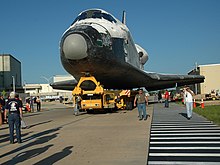


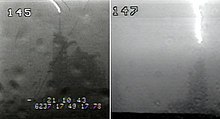

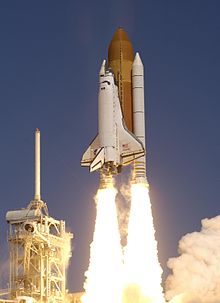
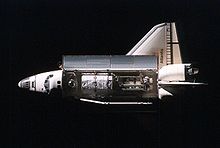




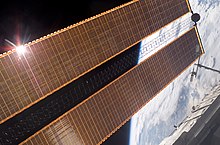

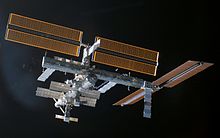


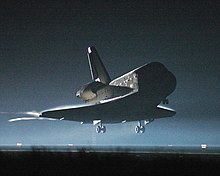
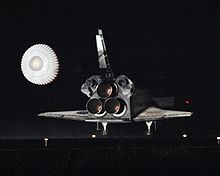
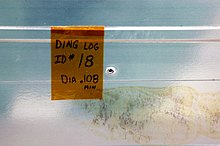


Space Transportation SystemCOSPAR IDSATCAT no.Space ShuttleAtlantisBrent W. Jett Jr.Christopher FergusonSteven MacLeanDaniel C. BurbankJoseph R. TannerHeidemarie Stefanyshyn-PiperKennedyLC-39BSLF Runway 33GeocentricLow EarthPerigee altitudeApogee altitudeInclinationPeriodHeidemarie M. Stefanyshyn-PiperChristopher J. FergusonSpace Shuttle programSTS-121STS-116International Space Stationassembly missionColumbia disasterSTS-114Kennedy Space Centersolar arraysbatteriesColumbia accidentTropical Storm ErnestoPositionshort tonsmetric tonsCanadarm2CanadarmChris HadfieldYork UniversityToronto, OntarioITS P3/P4 TrussSTS-31STS-82Soyuz TMA-9Soyuz spacecraftOrbiter Processing FacilityVehicle Assembly Buildingmobile launcher platformPad 39Bexternal tankKu-bandHurricane ErnestoGreenlandIcelandP3/P4 trussOrbiter Boom Sensor Systemrobotic armDan BurbankSteve MacLeanstarboardextra-vehicular activitiesJoe TannerHeide Stefanyshyn-PiperspacesuitsExpedition 13Jeffrey WilliamsPavel VinogradovDestiny Laboratory ModuleAtlantis'sQuest Airlockdecompression sicknessnitrogenJoseph Tannerextra-vehicular activitySolar Alpha Rotary Jointhelmet cameraP4 trusssolar arraysolar panelsSTS-97Mobile Base SystemStephen Harpercircuit-breakershort circuitAtlantis'Ku bandExpedition 14sonic boomsmicrometeoriteGeminiMoon RiverAudrey HepburnBrent Jettdouble bassDaniel BurbankTaras ShevchenkoTakin' Care of BusinessBachman–Turner OverdriveWipe OutThe SurfarisChris FergusonHotel CaliforniaThe EaglesJimmy BuffettDanger ZoneKenny LogginsRocky Mountain HighJohn DenverNe Partez Pas Sans MoiCeline DionBeautiful DayBetter Than EzraSTS-300Contingency Shuttle Crew SupportSpace Shuttle DiscoveryRemote Manipulator SystemSpace Shuttle AtlantisOutline of space science2006 in spaceflightList of International Space Station spacewalksList of Space Shuttle missionsLists of spacewalks and moonwalksList of human spaceflightsNational Aeronautics and Space Administration
